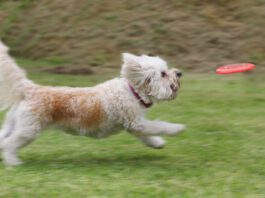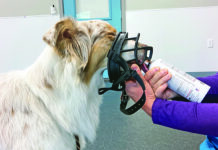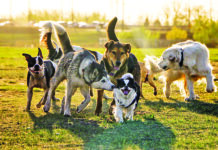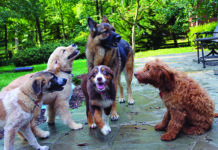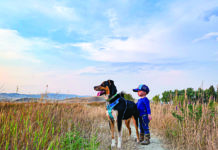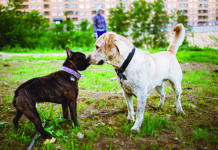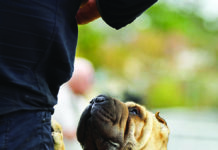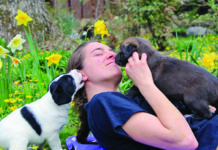Dog Muzzles: When To Use Them and How
Muzzles, and the dogs who wear them, often get a bad rap, as many people associate them with dogs who may display aggressive behavior....
5 Tips for Avoiding Fights at the Dog Park
Dog parks have never been more popular. They can be good opportunities for your dog to expend excess energy and have fun with other...
How To Supervise Good Puppy Play
If there’s one thing that can serve as the magic elixir of puppyhood, it’s the puppy playdate. Half an hour spent wrestling and chasing...
Recognizing Dog Stress While Adjusting to a New Home
The term “decompression” has become popular in dog training and behavior circles. A strict definition of the word references the process of releasing or...
Punishment vs. Interruption: Properly Managing Your Dog’s Behavior
"No! Get off the table!” “No! Give that here!” “No! Quit pestering her or I’ll spray you!”
All my life I’ve been around people who...
Meditations on Raising Small Children with Dogs
My young dog flies across the yard, tossing his ball in the air, chasing it as it hits the ground, then picks it up...
Dog House Rules
Once upon a time, societal norms dictated that if pet dogs failed to comply with strict rules for their behavior indoors, they were banished...
How to Safely Introduce Your Dog to Other Dogs
Given that our canine companions are a social species, you might think introducing two dogs would be a simple matter of turning them loose...
Ignore at Your Peril
Ignoring should work, right? One of the first bits of behavior science that we pick up as dog trainers is that behavior is driven...
What Fostering Can Do For Rescue Puppies
A pandemic has upended the globe, but here’s a little bright spot: puppy fostering is experiencing a golden era. Record numbers of people are offering...
What You Need to Know About Yellow Dogs and DINOS
I grew up around horses. In the horse world, if you tie a red ribbon in your horse’s tail, everyone knows that means your...
How To Help Your Dog Deal With Separation Anxiety
Have you been spending a lot more time with your dog, courtesy of coronavirus? As life slowly goes back to a “new normal” and...



